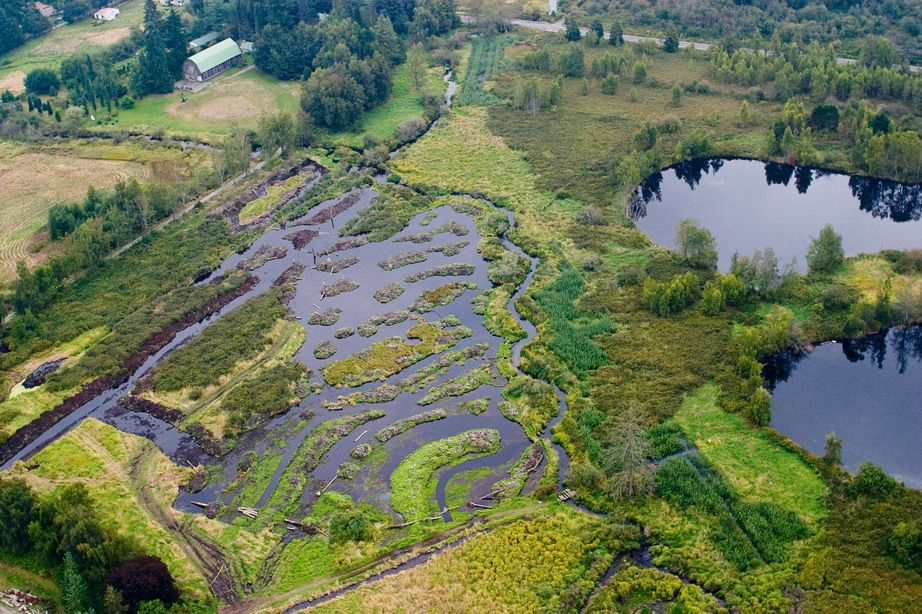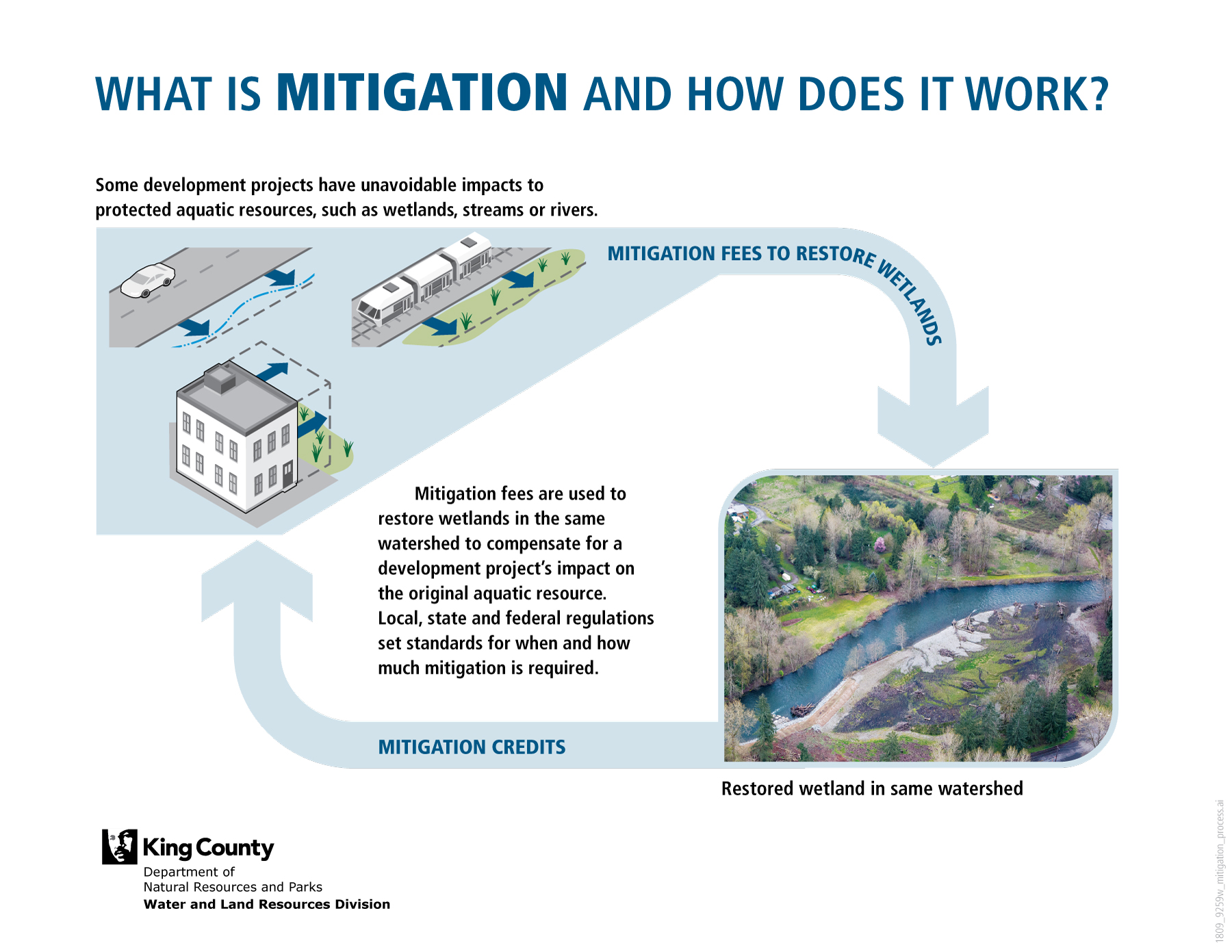How In-Lieu Fee Mitigation Works
Mitigation Reserves Program
Overview

When proposed projects will create unavoidable impacts to the environment, project sponsors must offset, or "mitigate", the environmental impacts associated with the project. The mitigation sequence includes avoiding and minimizing impacts as much as possible, and then making up for any unavoidable impacts through mitigation projects that restore wetlands and aquatic resources. Mitigation projects can occur on-site (at or near the place where the impact project occurs) or off-site. Off-site mitigation options may include use of a mitigation bank, "permittee-responsible" mitigation, or in-lieu fee (ILF) mitigation through the King County's Mitigation Reserves Program (MRP).
In a Federal Rule PDF (567 KB) published in April 2008, The U.S. Army Corps of Engineers (the Corps) and the U.S. Environmental Protection Agency (EPA) define an ILF program as:
“A program involving the restoration, establishment, enhancement, and/or preservation of aquatic resources through funds paid to a governmental or non-profit natural resources management entity to satisfy compensatory mitigation requirements... Similar to a mitigation bank, an in-lieu fee program sells compensatory mitigation credits to permittees whose obligation to provide compensatory mitigation is then transferred to the in-lieu program sponsor.”
Basics of Mitigation Reserves Program
Here is a step-by-step example of the process for mitigating unavoidable permitted impacts to wetlands, rivers, streams, and buffers through the MRP*:
- Permittees work with regulatory agencies and tribes to identify ways a proposed project can avoid and minimize environmental impacts.
- Regulatory agencies determine preferred options to mitigate unavoidable impacts. The Federal Rule establishes a preference hierarchy for the different types of compensatory mitigation available to a permittee. The order of preference outlined in the Federal Rule is as follows:
- If the permittee chooses to use the MRP (and the regulatory agencies approve), the ecological impacts are translated into a number of debits associated with the impact.
- Impacts are described in an In-Lieu Fee Use Plan with the calculation of debits and credits. The In-Lieu Fee Use Plan is submitted to regulators and the MRP.
- The permittee buys credits from the MRP to offset the debits associated with the impact. By purchasing credits, the permittee satisfies their compensatory mitigation requirements and has no further involvement in the mitigation implementation.
- The MRP chooses a mitigation site from a predefined Roster or proposes adding a site to the Roster. Roster sites may be publicly or privately owned and will be chosen using science-based watershed priorities.
- The MRP plans, implements, monitors, and maintains projects at chosen sites that will achieve ecological “lift.” On balance, completed projects should result in a number of credits equal to or greater than the number of debits associated with the original impacts (note: the permittee does not have any responsibility for the success of implemented mitigation projects).
*At multiple points in the process, an Interagency Review Team (IRT) will review and approve mitigation project proposals. The IRT is co-chaired by the Corps and the Washington Department of Ecology (Ecology); other members will include representatives from state and federal regulatory agencies, tribes, and local governments.
For questions about King County's Mitigation Reserves Program, please contact program staff.

 Translate
Translate
